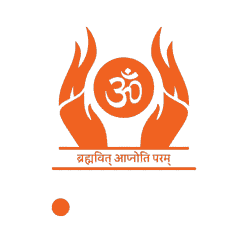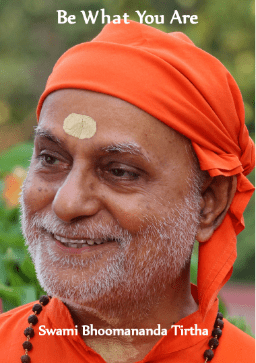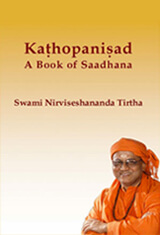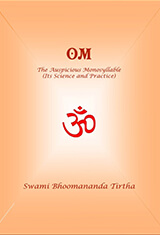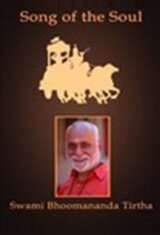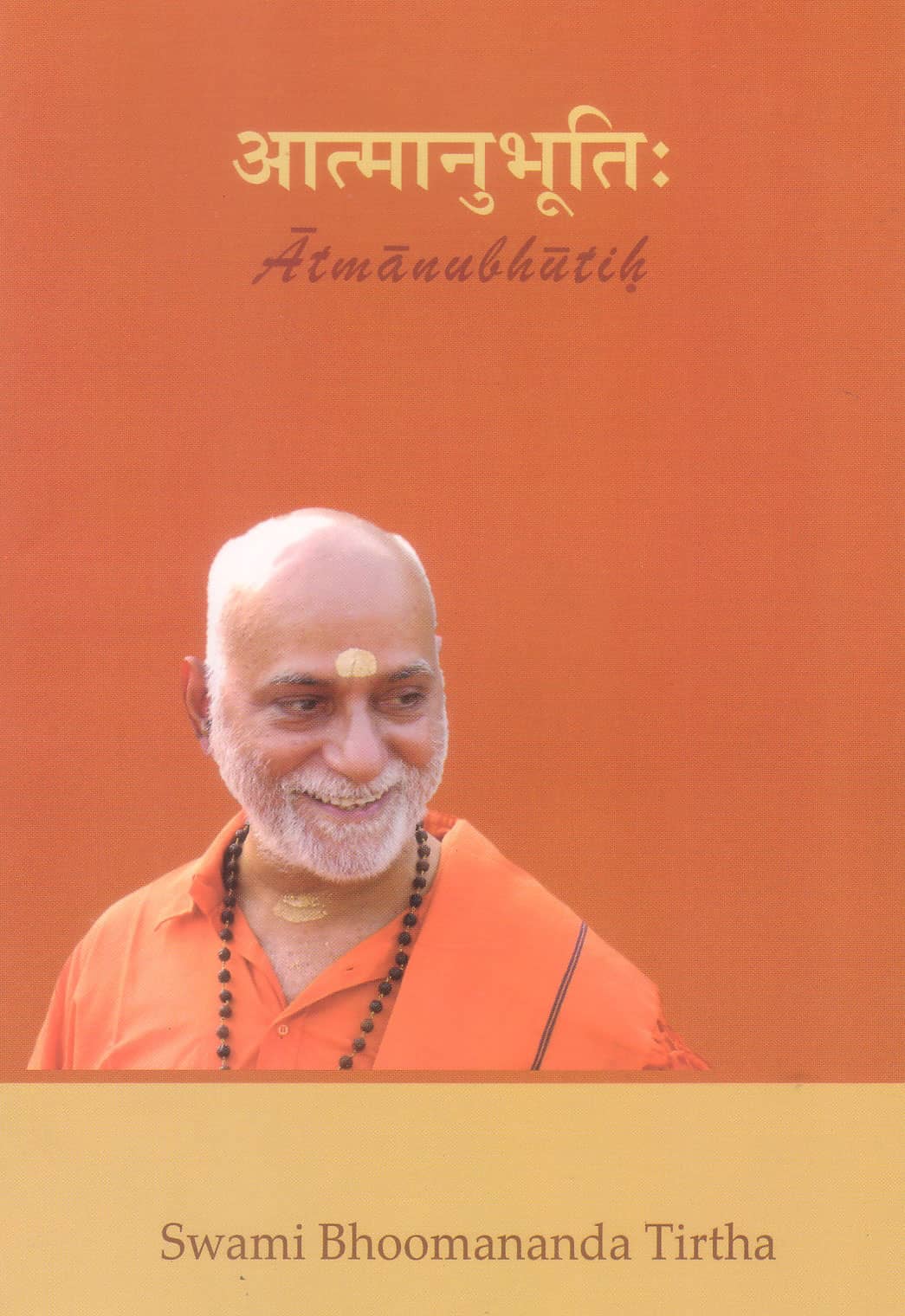Bhagavad Gita Chapter 14
description

Bhagavad Gita
Bhagavad Gita Chapter 14
Ma Gurupriya
श्रीभगवानुवाच ।
परं भूय: प्रवक्ष्यामि ज्ञानानां ज्ञानमुत्तमम् ।
यज्ज्ञात्वा मुनय: सर्वे परां सिद्धिमितो गता: ॥
śrī bhagavān-uvāca
paraṃ bhūya: pravakṣyāmi jñānānāṃ jñānam-uttamam
yajjñātvā munaya: sarve parāṃ siddhim-ito gatā: – 14.1
Lord Krishna said: I shall explain to you again the highest of all kinds of knowledge, on actualizing which, all ascetics have reached the state of supreme fulfilment.
इदं ज्ञानमुपाश्रित्य मम साधर्म्यमागता: ।
सर्गेऽपि नोपजायन्ते प्रलये न व्यथन्ति च ॥
idaṃ jñānam-upāśritya mama sādharmyam-āgatā:
sarge’pi nopajāyante pralaye na vyathanti ca – 14.2
By taking refuge in this wisdom, many have come to My state (finding identity with Me). They do not get born at the time of creation, nor get afflicted during dissolution.
मम योनिर्महद्ब्रह्म तस्मिन्गर्भं दधाम्यहम् ।
संभव: सर्वभूतानां ततो भवति भारत ॥
mama yonirmahad-brahma tasmin-garbhaṃ dadhāmy-aham
sambhava: sarva-bhūtānāṃ tato bhavati bhārata – 14.3
Mahat Brahma (Nature) is my great womb. There I cast my seed, and hence follows the birth of all beings.
सर्वयोनिषु कौन्तेय मूर्तय: सम्भवन्ति या: ।
तासां ब्रह्म महद्योनिरहं बीजप्रद: पिता ॥
sarva-yoniṣu kaunteya mūrtaya: sambhavanti yā:
tāsāṃ brahma mahad-yonir-ahaṃ bīja-prada: pitā – 14.4
For whatever forms are born of individual wombs, O Kaunteya (Arjuna), the one great womb is Brahma (in Its active aspect, meaning Nature). And I am the Father who casts the seed.
सत्त्वं रजस्तम इति गुणा: प्रकृतिसंभवा: ।
निबध्नन्ति महाबाहो देहे देहिनमव्ययम् ॥
sattvaṃ rajas-tama iti guṇā: prakṛti-sambhavā:
nibadhnanti mahābāho dehe dehinam-avyayam – 14.5
The three guṇas (qualities, strands), namely sattva, rajas and tamas, belong to Nature. They strongly bind the imperishable embodied being to the body, O mighty-armed (Arjuna).
तत्र सत्त्वं निर्मलत्वात्प्रकाशकमनामयम् ।
सुखसङ्गेन बध्नाति ज्ञानसङ्गेन चानघ ॥
tatra sattvaṃ nirmalatvāt-prakāśakam-anāmayam
sukha-saṅgena badhnāti jñāna-saṅgena cānagha – 14.6
Of these, sattva guṇa by dint of its immaculate nature, is the cause of light (knowledge) and harmony. But, O sinless Arjuna, it binds one by causing sanga (clinging) to happiness and knowledge.
रजो रागात्मकं विद्धि तृष्णासङ्गसमुद्भवम् ।
तन्निबध्नाति कौन्तेय कर्मसङ्गेन देहिनम् ॥
rajo rāgātmakaṃ viddhi tṛṣṇāsaṅga-samudbhavam
tan-nibadhnāti kaunteya karma-saṅgena dehinam – 14.7
Know rajo-guṇa to be in the nature of desire and passion. It springs from greed and delusional clinging. It binds one (the embodied being), O son of Kunti, through clinging to ceaseless activity.
तमस्त्वज्ञानजं विद्धि मोहनं सर्वदेहिनाम् ।
प्रमादालस्यनिद्राभिस्तन्निबध्नाति भारत ॥
tamas-tvajñānajaṃ viddhi mohanaṃ sarva-dehinām
pramādālasya-nidrābhis-tan-nibadhnāti bhārata – 14.8
O Bhārata, know that tamo-guṇa, deluding all alike, is born of ignorance. It binds the embodied beings through inattention, lethargy and sleep.
सत्त्वं सुखे सञ्जयति रज: कर्मणि भारत ।
ज्ञानमावृत्य तु तम: प्रमादे सञ्जयत्युत ॥
sattvaṃ sukhe sañjayati raja: karmaṇi bhārata
jñānam-āvṛtya tu tama: pramāde sañjayaty-uta – 14.9
Sattva binds one by comfort and happiness, rajas by activity, O Bhārata. Covering knowledge, tamas binds one by carelessness or inattention.
रजस्तमश्चाभिभूय सत्त्वं भवति भारत ।
रज: सत्त्वं तमश्चैव तम: सत्त्वं रजस्तथा ॥
rajas-tamaścābhibhūya sattvaṃ bhavati bhārata
raja: sattvaṃ tamaścaiva tama: sattvaṃ rajas-tathā – 14.10
O Bhārata, (sometimes) sattva prevails dominating over rajas and tamas; (sometimes) rajas rules over sattva and tamas; (and again) tamas overwhelms sattva and rajas.
सर्वद्वारेषु देहेऽस्मिन्प्रकाश उपजायते ।
ज्ञानं यदा तदा विद्याद्विवृद्धं सत्त्वमित्युत ॥
sarvadvāreṣu dehe’smin-prakāśa upajāyate
jñānaṃ yadā tadā vidyād-vivṛddhaṃ sattvam-ity-uta – 14.11
When the brilliance of knowledge adorns all the sense organs in the body, then know it definitely to be the sublime effect of enhanced sattva-guṇa.
लोभ: प्रवृत्तिरारम्भ: कर्मणामशम: स्पृहा ।
रजस्येतानि जायन्ते विवृद्धे भरतर्षभ ॥
lobha: pravṛttir-ārambha: karmaṇām-aśama: spṛhā
rajasy-etāni jāyante vivṛddhe bharatarṣabha – 14.12
When rajo-guṇa increases, greed, extrovert drive, enterprise, unceasing involvement in actions, unabating desire – all these arise, O best of Bharatas (Arjuna).
अप्रकाशोऽप्रवृत्तिश्च प्रमादो मोह एव च ।
तमस्येतानि जायन्ते विवृद्धे कुरुनन्दन ॥
aprakāśo’pravṛttiśca pramādo moha eva ca
tamasy-etāni jāyante vivṛddhe kuru-nandana – 14.13
Lack of brilliance, inertia or apathy towards activity, inattention as well as delusion – these arise when tamas is enhanced, O Kurunandana (Arjuna).
यदा सत्त्वे प्रवृद्धे तु प्रलयं याति देहभृत् ।
तदोत्तमविदां लोकानमलान्प्रतिपद्यते ॥
yadā sattve pravṛddhe tu pralayaṃ yāti deha-bhṛt
tadottamavidāṃ lokān-amalān-pratipadyate – 14.14
When the embodied one happens to die with sattva in predominance, then he attains the pure regions meant for the most learned ones.
रजसि प्रलयं गत्वा कर्मसङ्गिषु जायते ।
तथा प्रलीनस्तमसि मूढयोनिषु जायते ॥
rajasi pralayaṃ gatvā karma-saṅgiṣu jāyate
tathā pralīnas-tamasi mūḍha-yoniṣu jāyate – 14.15
By courting death when rajas is predominant, one is born among those who cling to activities. And dying while tamas dominates, one is born in deluded and ignorant wombs.
कर्मण: सुकृतस्याहु: सात्त्विकं निर्मलं फलम् ।
रजसस्तु फलं दु:खमज्ञानं तमस: फलम् ॥
karmaṇa: sukṛtasyāhu: sāttvikaṃ nirmalaṃ phalam
rajasas-tu phalaṃ du:kham-ajñānaṃ tamasa: phalam – 14.16
The result of good or noble action is said to be sāttvika and pure. Of rājasa-action, the result is affliction, and of tāmasa-action, is ignorance (and delusion).
सत्त्वात्सञ्जायते ज्ञानं रजसो लोभ एव च ।
प्रमादमोहौ तमसो भवतोऽज्ञानमेव च ॥
sattvāt-sañjāyate jñānaṃ rajaso lobha eva ca
pramāda-mohau tamaso bhavato’jñānam-eva ca – 14.17
From sattva-guṇa is born knowledge, wisdom. From rajas arises greed. Inattention and delusion, coupled with ignorance, result from tamas.
ऊर्ध्वं गच्छन्ति सत्त्वस्था मध्ये तिष्ठन्ति राजसा: ।
जघन्यगुणवृत्तिस्था अधो गच्छन्ति तामसा: ॥
ūrdhvaṃ gacchanti sattvasthā madhye tiṣṭhanti rājasā:
jaghanyaguṇa-vṛttisthā adho gacchanti tāmasā: – 14.18
Sāttvika people go upwards, rājasa ones remain in the middle, while the tāmasa people, given to lowest tendencies and activities, go downwards.
नान्यं गुणेभ्य: कर्तारं यदा द्रष्टानुपश्यति ।
गुणेभ्यश्च परं वेत्ति मद्भावं सोऽधिगच्छति ॥
nānyaṃ guṇebhya: kartāraṃ yadā draṣṭānupaśyati
guṇebhyaśca paraṃ vetti mad-bhāvaṃ so’dhigacchati – 14.19
When the seer does not see any doer besides the guṇas, and also perceives That which transcends the guṇas, then he attains My state (attains the Supreme).
गुणानेतानतीत्य त्रीन्देही देहसमुद्भवान् ।
जन्ममृत्युजरादु:खैर्विमुक्तोऽमृतमश्नुते ॥
guṇān-etān-atītya trīn-dehī deha-samudbhavān
janma-mṛtyu-jarā-du:khair-vimukto’mṛtam-aśnute – 14.20
By transcending these three guṇas, which give rise to embodiment, one gets freed from the torments of birth, death and decrepitude, and enjoys the bliss of immortality.
अर्जुन उवाच ।
कैर्लिङ्गैस्त्रीन्गुणानेतानतीतो भवति प्रभो ।
किमाचार: कथं चैतांस्त्रीन्गुणानतिवर्तते ॥
arjuna uvāca
kairliṅgais-trīn-guṇān-etān-atīto bhavati prabho
kim-ācāra: kathaṃ caitāṃstrīn-guṇān-ativartate – 14.21
Arjuna said: O Lord, what are the characteristics of a person, which make him transcend these three guṇas? How does he behave, and by what pursuit does he rise above these three guṇas?
श्रीभगवानुवाच ।
प्रकाशं च प्रवृत्तिं च मोहमेव च पाण्डव ।
न द्वेष्टि सम्प्रवृत्तानि न निवृत्तानि काङ्क्षति ॥
śrī bhagavān-uvāca
prakāśaṃ ca pravṛttiṃ ca moham-eva ca pāṇḍava
na dveṣṭi sampravṛttāni na nivṛttāni kāṅkṣati – 14.22
Lord Krishna said: O Pandava, he who does not resent the rise of either (sattva’s) brilliance, or (rajas’s) activity or (tamas’s) delusion, and also does not yearn for the subsidence of any of them;
उदासीनवदासीनो गुणैर्यो न विचाल्यते ।
गुणा वर्तन्त इत्येव योऽवतिष्ठति नेङ्गते ॥
udāsīnavad-āsīno guṇairyo na vicālyate
guṇā vartanta ity-eva yo’vatiṣṭhati neṅgate – 14.23
He who remains seated with lofty indifference, not shaken by the interplay of guṇas; and who remains stable and unwavering understanding that guṇas alone are operating;
समदु:खसुख: स्वस्थ: समलोष्टाश्मकाञ्चन: ।
तुल्यप्रियाप्रियो धीरस्तुल्यनिन्दात्मसंस्तुति: ॥
sama-du:kha-sukha: svastha: sama-loṣṭāśma-kāñcana:
tulya-priyāpriyo dhīrastulya-nindātma-saṃstuti: – 14.24
(He who) remains equipoised in sorrow and happiness, rests firmly in oneself, considers a clod of earth, stone and a piece of gold with equal importance, is evenly disposed towards the desirable and detestable, poised (dhīram), accepting praise and blame alike;
मानापमानयोस्तुल्यस्तुल्यो मित्रारिपक्षयो: ।
सर्वारम्भपरित्यागी गुणातीत: स उच्यते ॥
mānāpamānayos-tulyas-tulyo mitrāri-pakṣayo:
sarvārambha-parityāgī guṇātīta: sa ucyate – 14.25
He who is even towards honour and dishonour, impartial towards friends and enemies, and has renounced all sense of undertaking, is said to have transcended the guṇas.
मां च योऽव्यभिचारेण भक्तियोगेन सेवते ।
स गुणान्समतीत्यैतान् ब्रह्मभूयाय कल्पते ॥
māṃ ca yo’vyabhicāreṇa bhakti-yogena sevate
sa guṇān-samatītyaitān brahma-bhūyāya kalpate – 14.26
Also, whoever worships Me (the Supreme) with unswerving devotion, transcends these guṇas very well, and is fit to become Brahman.
ब्रह्मणो हि प्रतिष्ठाहममृतस्याव्ययस्य च ।
शाश्वतस्य च धर्मस्य सुखस्यैकान्तिकस्य च ॥
brahmaṇo hi pratiṣṭhāham-amṛtasyāvyayasya ca
śāśvatasya ca dharmasya sukhasyaikāntikasya ca – 14.27
I am the abode of immortal and immutable Brahman; also of eternal dharma, as well as of ultimate happiness.
ओं तत्सदिति श्रीमद्भगवद्गीतासूपनिषत्सु ब्रह्मविद्यायां योगशास्त्रे श्रीकृष्णार्जुनसंवादे गुणत्रयविभागयोगो नाम चतुर्दशोऽध्याय: ।
oṃ tat-sad-iti śrīmad-bhagavad-gītāsūpaniṣatsu brahma-vidyāyāṃ yoga-śāstre śrīkṛṣṇārjuna-saṃvāde guṇa-traya-vibhāga-yogo nāma caturdaśo’dhyāya:
Om – the symbol of Brahman, tat – that singular Reality (Brahman), sat – the ever abiding presence (Brahman).
Thus ends the fourteenth chapter entitled Guṇa-traya-vibhāga Yoga, during the Srikrishna-Arjuna dialogue in Śrīmad Bhagavad Gita, constituting Yoga-śāstra, which falls within Brahmavidya as presented in the Vedic Upanishads.
Bhagavad Gita
Bhagavad Gita Chapter 14
Ma Gurupriya
You Might Be Interested In
Bhagavad Gita Chapter 1...
Bhagavad Gita Chapter 11
Swami Nirviseshananda Tirtha
Bhagavad Gita Chapter 5
Bhagavad Gita Chapter 5
Ma Gurupriya
Bhagavad Gita Chapter 1...
Bhagavad Gita Chapter 10
Swami Nirviseshananda Tirtha



